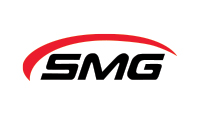We manage energy project development, environmental permitting, remediation and compliance, insustrial hygiene, health & safety, auditing, environmental management, government relations. We solve your problems in all of these areas. We move quickly and dig deeply to reach your goals. We work wherever you are.
How can SMG help you?
SMG POV
The Kentucky Division of Air Quality (DAQ) 2014 Annual Report was recently added to the KDEP website. The report was printed in September and includes a wealth of information about air programs and air quality in the Commonwealth. I like to use these annual reports to monitor trends in inspections, permitting, monitoring, and pollutants. Items of interest include many charts of data and air toxics summaries for specific pollutants and specific monitoring stations. National Ambient Air Quality Standards (NAAQS) for criteria pollutants are summarized and data about the State’s compliance is included. Other charts of interest are the total hazardous air pollutant (HAP) emissions and the total HAP emissions minus electric generation facility (EGU) emissions. Total HAP releases as reported in EPA’s toxic release inventory (TRI) have dramatically decreased since 2008 and continue to decrease. If you are interested in finding additional reports from the Division, they are available at: http://air.ky.gov/Pages/DivisionReports.aspx. I spend a lot of my time at Smith Management Group on air permitting compliance, revisions and permitting for new processes and facilities. If you have a need for air permitting services, please contact us at 502-587-6482 or (859) 231-8936.
FEATURED PROJECT
PROBLEM
A local company engaged in manufacturing imported a small amount of a chemical substance defined under TSCA. Faced with a potential EPA enforcement action with penalties assessed for noncompliance under TSCA of up to $32,500 per day per violation, the company called SMG for help.
SMG'S APPROACH
SMG analyzed the company’s current TSCA procedures and assisted the company in developing a proactive, cost-effective compliance procedure. SMG also facilitated a training program to educate employees about TSCA.
MG worked with the company to develop mechanisms that assured adherence with the policies that were being implemented for compliance. Procedures to promptly correct any potential violations and prevent future violations were also put into place.
RESULTS
SMG was able to show that the company complied with the relevant TSCA regulations and was improving their TSCA policies and procedures to assure that future issues were less likely to occur. The company was not subjected to the proposed penalties and now has mechanisms in place to maintain TSCA compliance.
